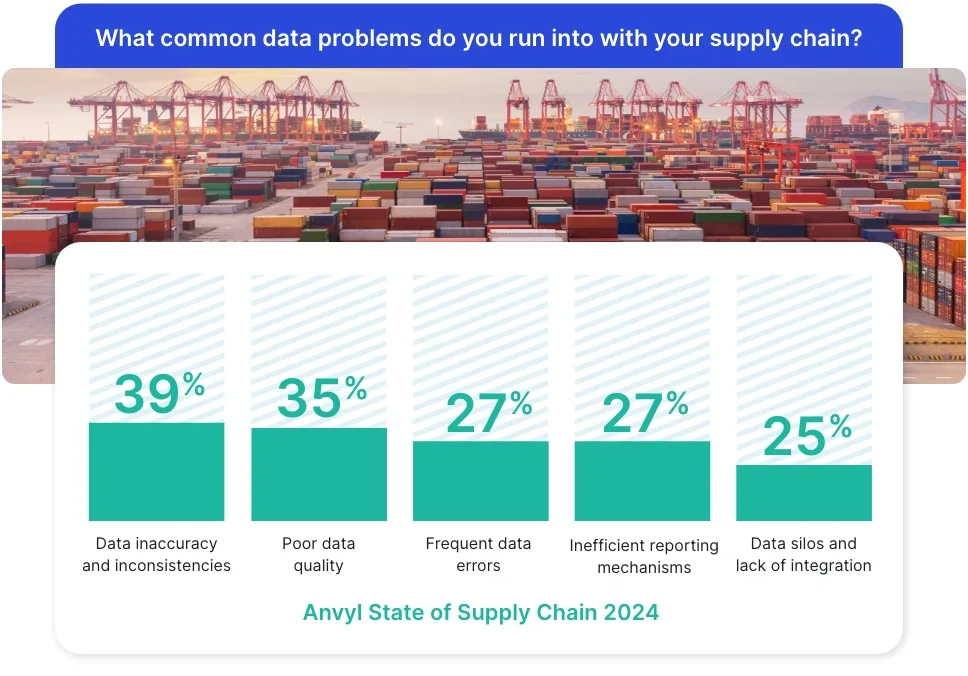Transportation delays. Supply shortages. Geopolitical and economic instability. The only constant in the modern supply chain — and the challenges that come with it — is change, and the onus is on businesses to turn logistical pressures into opportunities in real time as they navigate this evolving landscape.
As the saying goes, “all that begins well, ends well,” and the supply chain is no exception. First mile logistics set the tone for the entire fulfillment process, making or breaking supply chain efficiency and a brand’s ability to scale their business overall.
The good news is that with big challenges come bigger opportunities. We break down seven first mile logistical challenges brands should prioritize solving by the end of this year to set themselves up for sustainable growth in 2025, and beyond.
1. Labeling and packaging problems
Although they may seem like a minor detail, labels and packaging can have an outsized impact on first mile operations — and yet, many businesses continue to take on the risk of allowing manual labeling processes and poor packaging within their supply chain.
Unreadable labels can lead to lost packages and more money spent on replacing missing items, while improperly labeled shipments can result in unexpected fees from the receiver if they have firm labeling requirements.
But without the right packaging to protect the goods inside, it doesn’t matter whether those shipments make it to their destination in the first place. Nonetheless, many businesses prioritize rushing to meet demand, opting for one-size-fits-all packaging rather than considering the safest way to pack the goods in each shipment. The result is damaged goods on arrival, which can drive up additional costs from inventory loss on top of freight forwarding delays.
These risks can be left in the past by automating dispatching processes, creating standard operating procedures (SOPs) for labeling and packaging shipments — and then centralizing those documents in a single source of truth that every player in the supply chain can access.
2. Inconsistent warehouse receiving processes
A consistent warehouse receiving process is another underestimated factor in a successful first mile operation, and not having one can lead to significant inventory management headaches.
For example, if your supplier labels products differently from your warehouse, you can expect issues tracking available SKUs and knowing when to reorder. And without protocols in place for suppliers to provide shipping updates to the warehouses, inventory can go missing in action and create delays that affect the end-customer.
Beyond adopting a barcoding or RFID system to accurately scan new inventory shipments as they arrive at the warehouse, businesses can avoid these risks by optimizing their warehouse receiving process by adopting efficient, responsive management tools with features designed to improve productivity and collaboration across the supply chain.
In practice, that can look like streamlining communication between suppliers and warehouses to make it as easy as possible to share accurate and timely shipping information, or using a warehouse management system to track inventory levels in real time to make sure products are stored in the most efficient locations.
3. Inefficient pickup scheduling and transportation
In an ongoing effort to satisfy customers, most brands have focused their attention on last mile delivery in recent years while upstream inefficiencies in pickup scheduling and transportation go unchecked. The reality is that those first mile obstacles take a toll on the last mile, and the businesses that tackle them have the best chance at keeping customers happy and buying long-term.
Poor pickup scheduling can cause vehicles to operate below their full capacity, leading to more trips and higher transportation costs to cover fuel and driver wages. If those transport schedules aren’t optimized, businesses may resort to expedited shipping — or face additional inventory storage costs from longer holding times at warehouses — driving the immediate costs of these inefficiencies even higher.
Besides the direct costs, the increased complexity of poor pickup scheduling and transportation comes with opportunity costs, like a higher risk of downstream disruptions that affect suppliers, warehouses, and end-customers — and cause businesses to miss out on potential sales and market share if they can’t respond quickly to demand. Companies might try to manage this by allocating more time, personnel, and technology to handle these complexities, but that only diverts focus from more strategic initiatives that drive growth.
The consequences of these increased costs, poor capacity utilization, and heightened complexity can affect not just the supply chain, but a business’ overall health. With that in mind, it’s in a business’ best interest to address these pickup and transportation inefficiencies to improve their bottom line, enhance customer satisfaction, and avoid even more costly operational challenges in the future.
4. Low visibility and unforeseen disruptions
From supply shortages and transportation delays to strikes and labor disputes, there’s no shortage of potential supply chain disruptions for brands to contend with these days — and most of them are out of their direct control.

It stands to reason that 52% of brands polled for Anvyl’s State of Supply Chain survey identified visibility as a top priority to gain insights into the factors they can control. But despite multi-million dollar investments, many businesses are still going backward.
Stale data, information silos, and analog legacy systems like spreadsheets, handwritten notes, and call logs are all long-standing barriers to supply chain visibility that keep businesses at risk of disruptions and dissatisfied customers.
Modern supply chain management calls for intelligent PO software designed to enhance visibility by centralizing real-time data so companies can track the progress of items at every stage, from PO issuance to the product’s delivery to a warehouse. Unlike those being slowed down by endless spreadsheets, the businesses that take this opportunity to modernize their approach will have a competitive advantage built on better data-driven decisions, the ability to adapt to changing circumstances, and anticipate delays before they happen.
5. Disconnected data sources
Supply chain data is in a constant state of flux with inventory levels, demand patterns, and supplier inputs shifting in real time. According to Anvyl’s State of Supply Chain survey, connecting all that data is one of the top challenges consumer brands face within their supply chain — and the ability to make timely and informed decisions is just the beginning of what’s at stake.

Disconnected data sources require supply chain operators to regularly parse through fragmented data sources to identify what needs their attention. If that data is out of date or inaccurate as a result of manual processes, those operators might make critical decisions based on wrong information. The result is more inefficiencies, increased costs, and workflow disruptions — all of which can add up to delayed shipments, stockouts, and dissatisfied customers.
The takeaway is that static and disparate data sources can stymie business growth for the same reasons as low visibility across the supply chain. With the emergence of intelligent supply chain solutions, brands have nothing to lose by moving beyond manual data systems. But from dynamic insights for proactive decision-making to enhanced agility to support long-term growth, they have everything to gain.
6. Unclear protocols for supplier communication
Maintaining as much control as possible over the supply chain is mission critical whether a business works with tens or hundreds of suppliers — but unclear protocols for communicating and managing supplier updates often stand in the way.
Consider the challenge of needing to use four communication channels to keep tabs on suppliers. Time is wasted tracking down context, choosing a channel to communicate changes — and with all the back and forth, there’s a risk that important details will fall between the cracks.
When it comes to keeping suppliers and supply chain teams on the same page with efficient communication, a centralized supply chain management system (SCRM) is the answer. Rather than cross-referencing information from emails, texts, call notes, and so on, SCRMs provide a single source of truth by letting suppliers input updates directly into the platform for the most effective communication about unforeseen surprises.
Moving from ad hoc and analog channels to a single source of truth for supplier communications is the best way for businesses to not only avoid costly mistakes and time wasted — but also to improve supplier relationships, streamline important business practices, and effectively monitor dynamic changes in the modern supply chain.
7. Fragmented analytics tools
Centralizing supply chain data is one thing, but having distilled and actionable insights at your fingertips is quite another — especially for supply chain executives or senior leadership tasked with major business decisions.
On top of hampering supply chain visibility, outdated reporting systems can lead supply chain decision-makers to take action on a fragmented analysis, and miss chances to capitalize on new business opportunities, ultimately hindering growth.
Real-time supply chain insights, however, can set executives up to identify trends, predict market shifts, and make sound decisions that keep the business growing.
To that end, supply chain management software like Anvyl centralizes data from suppliers, production facilities, and transportation partners, giving teams visibility into the status of materials, orders, and shipments in real time. The result is a more holistic view of supply chain relationships, which goes a long way toward an efficient first mile.
Ready to learn more? Book a demo, or read more about optimizing the first mile.



